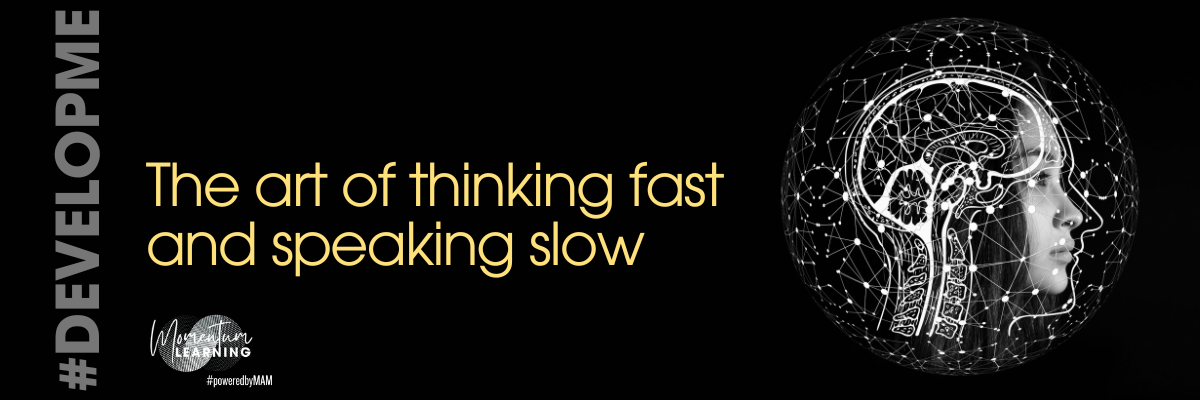The art of thinking fast and speaking slow
Mary-Anne Murphy
Thinking on your feet is a vital skill for a leader. Even more so when under pressure.
Being able to manage competing information, sense-make, synthesise and strategise, whilst also humaning are vital skills in any leader's kete.
In his book Thinking, Fast and Slow, Daniel Kahneman states,
"Intelligence is not only the ability to reason; it is also the ability to find
relevant material in memory and to deploy attention when needed."
But, whilst thinking fast is a skill, speaking slow is the skill in action. Let me explain.
Although a leader may be able to think quickly through complex situations or pieces of information, the art is in communicating this in a carefully considered manner, as opposed to thinking fast and speaking fast.
There is an art in speaking slowly.
This art requires that leaders hold space, listen to understand, and are vitally careful with how they speak, when they speak, what they speak, the tone in which they speak and the clarity of their message. This is the art of speaking slowly.
Consider a time when you have been on the receiving end of some hurtful speaking. Often it has come from the limbic brain, charged with emotion and hastily conveyed to you. And, I am sure, you can even remember most of what was said it had that much of an impact on you. It is our response that can make or break a relationship. When we are able to think fast and speak with less haste, we can communicate in a way that sets boundaries, as well as being heard.
The art of thinking fast and speaking slowly underpins a leader's ability to build better relationships, build better communication skills, and build better teams.
Best-selling author Nancy Duarte explored this within her practice by recording herself in a meeting. What she noticed spurred her on a journey of self-discovery into unpacking where her think fast, speak fast modality came from, and its impact on how she led and those she led.
Interested? Perhaps begin by collating some data, either through voice recording or videoing a meeting, or gaining feedback from your colleagues. Then you can start to explore this within your own leadership.
I’ll meet you there!

